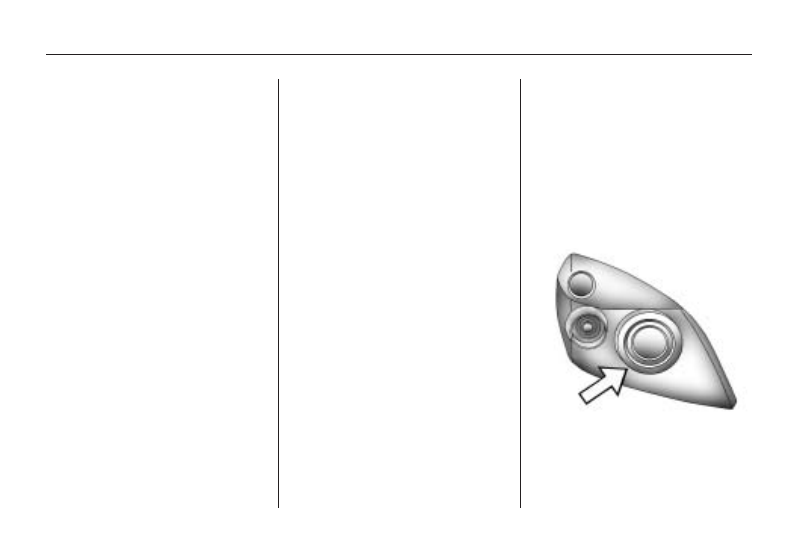Saturn Astra (2008 year). Instruction - part 14

Headlamp Aiming
The optical headlamp aiming system
has been preset at the factory
and should need no further
adjustment.
However, If the vehicle is damaged
in a crash, the headlamp aim
may be affected and adjustment
may be necessary.
If oncoming vehicles flash their high
beams at you, this may also mean
the vertical aim needs to be adjusted.
It is recommended that the vehicle
is taken to your dealer/retailer for
service if the headlamps need to be
re-aimed. It is possible however, to
re-aim the headlamps as described.
The vehicle should:
•
Be placed so the headlamps
are 25 ft. (7.6 m) from a light
colored wall.
•
Have all four tires on a perfectly
level surface which is level all
the way to the wall.
•
Be placed so it is perpendicular
to the wall.
•
Not have any snow, ice, or
mud on it.
•
Be fully assembled and all other
work stopped while headlamp
aiming is being done.
•
Have a full tank of fuel and
one person or 160 lbs (75 kg)
on the driver seat.
•
Have all tires properly inflated.
Headlamp aiming is done with the
vehicle’s low-beam headlamps.
The high-beam headlamps will be
correctly aimed if the low-beam
headlamps are aimed properly.
To adjust the vertical aim on
the headlamps:
1. Open the hood. See Hood
Release on page 9-5 for more
information.
2. Locate the aim dot on the lens of
the low-beam headlamp.
9-26
Vehicle Service and Care